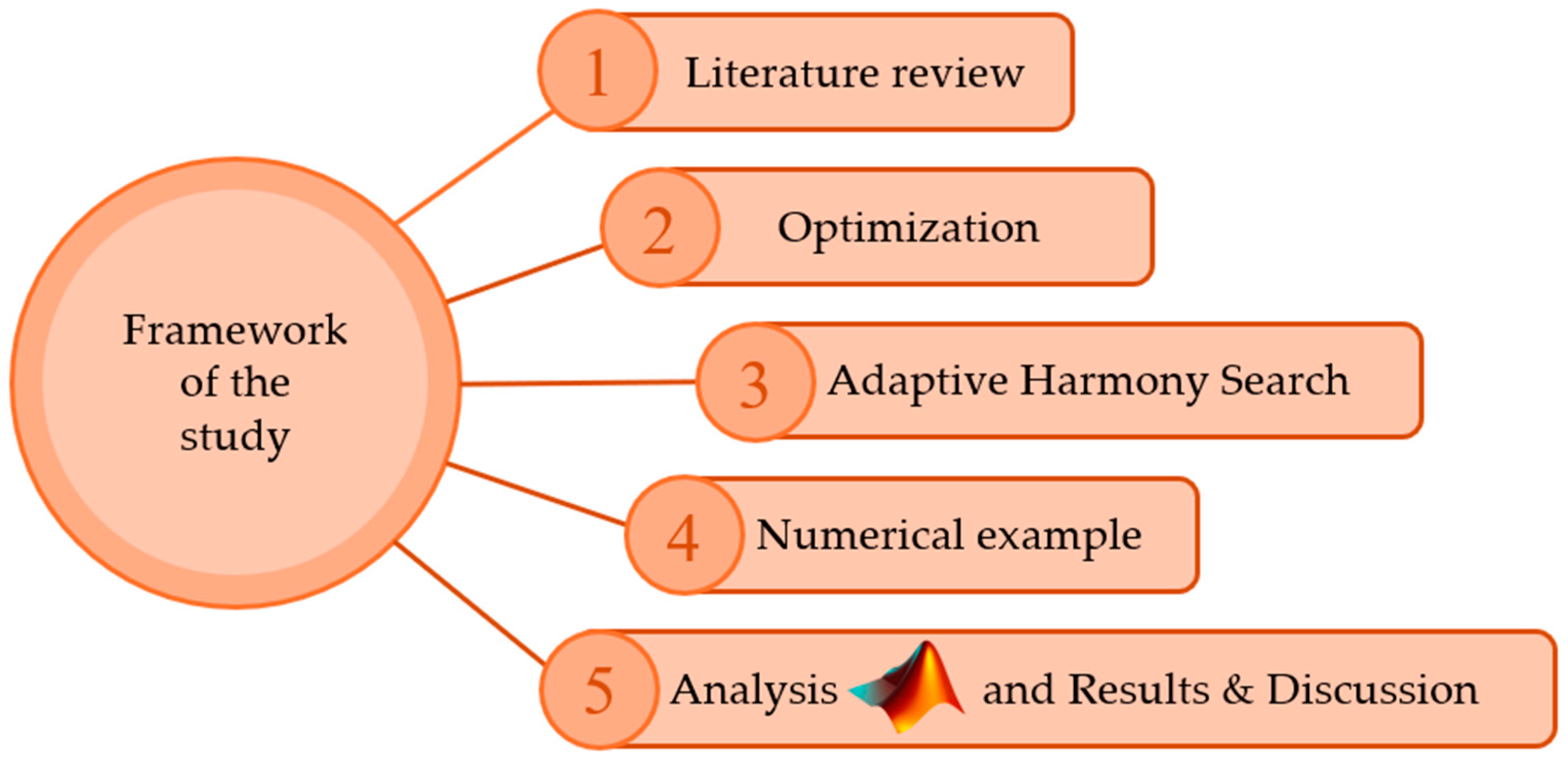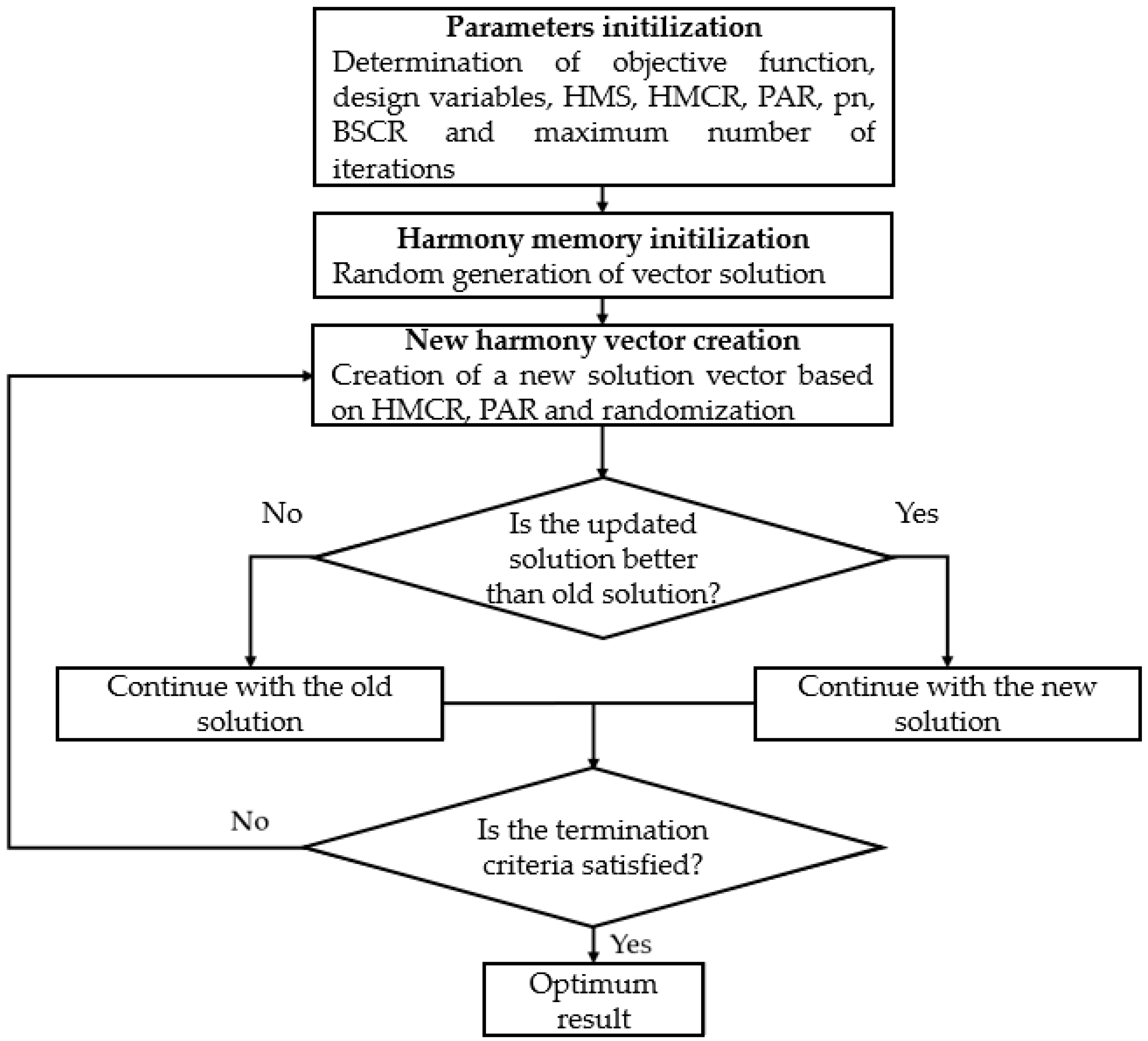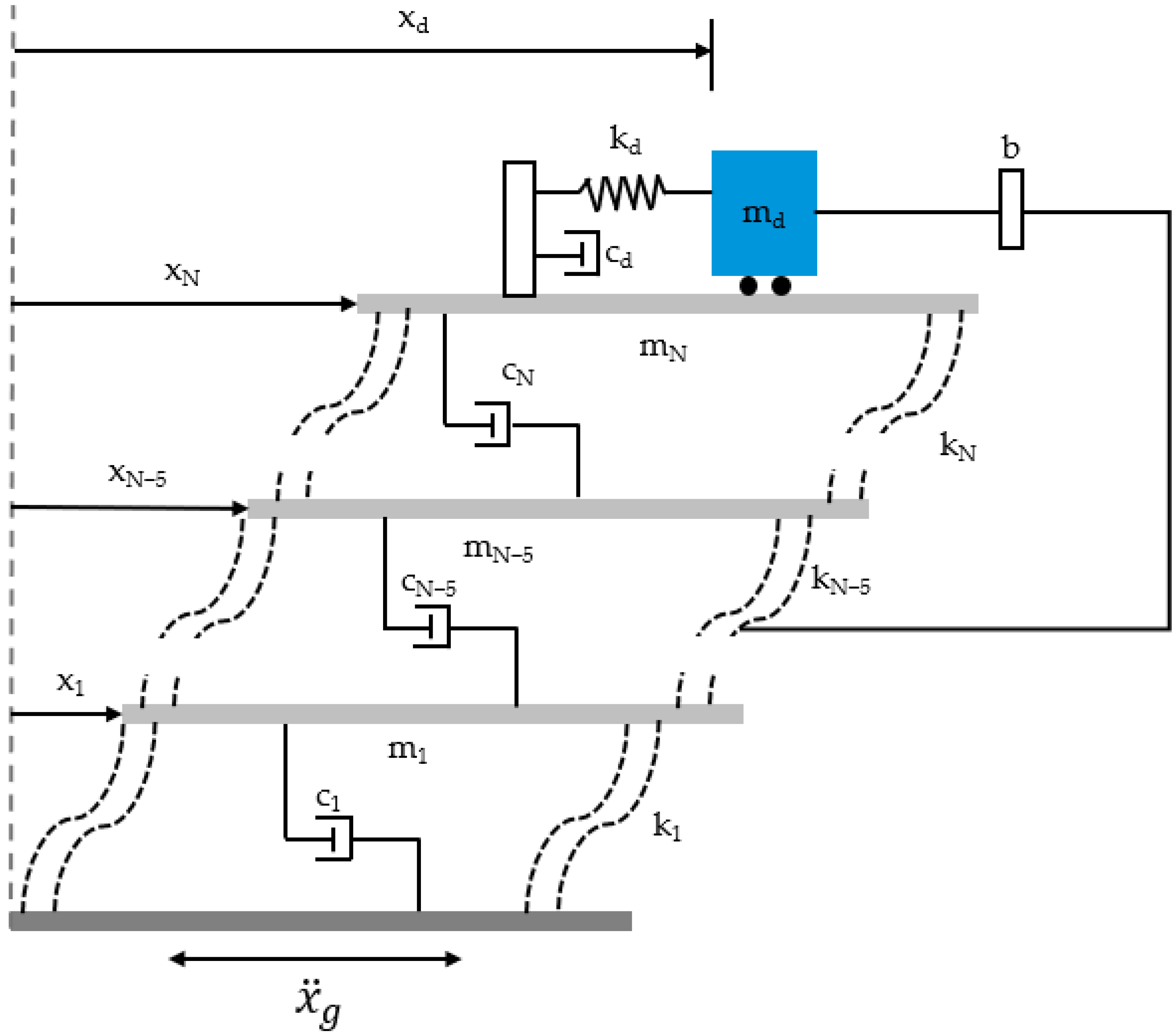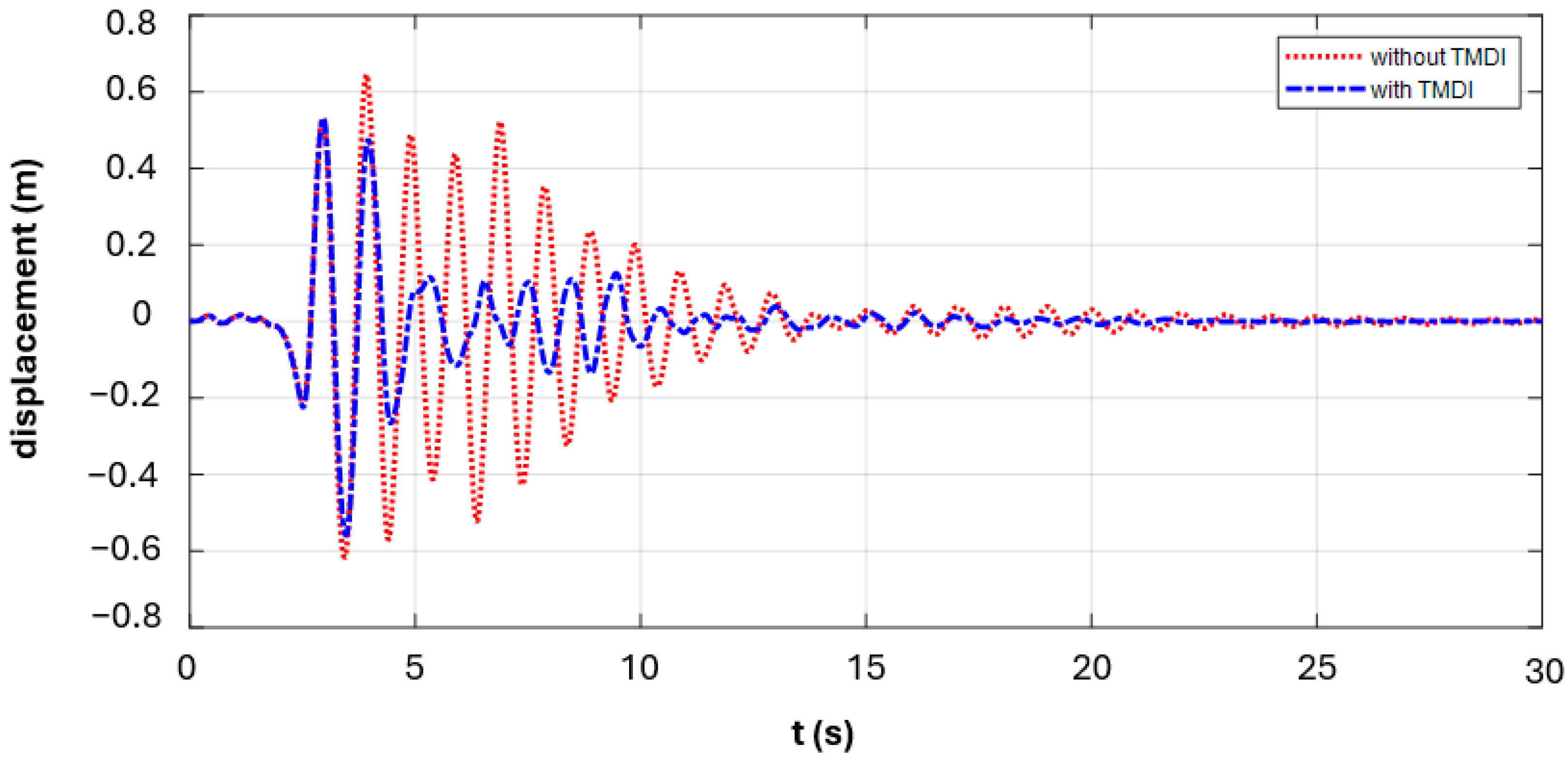1. Introduction
Shelter, one of the most basic needs of humanity, is nowadays easily provided with highly developed techniques. The aim of structural engineering is to design adequately safe and economical structural systems against various types of external loads. One of the most difficult issues in this regard is earthquakes. It is necessary to take precautions against earthquakes, which can have extremely destructive effects on structures. Also, the design of tall buildings is challenging due to their increased sensitivity to dynamic wind loads. As the height of a building increases, its structural stiffness decreases. Resonance can occur, especially in flexible and thin structures. Wind-induced vibrations can adversely affect structural performance, the comfort of occupants, and the operation of equipment inside the building. Damping plays a critical role in these systems. Since natural damping is often insufficient in many tall buildings, engineers use additional damping devices. Studies conducted to date have shown that these devices are critical in improving the dynamic performance of tall buildings.
There are important developments for the safe and economical design of structural systems with adequate strength, stiffness and ductility. One of these developments is structural control systems. Structural control systems are classified as passive, active, hybrid, and semi-active. Among these structural control systems, passive structural control systems are the most commonly used. Passive control devices do not require an external power source (
Figure 1). The device uses the forces generated in the device due to building movement. Thus, there is no need for external power and using an active control algorithm. This makes passive control devices ideal and attractive for vibration suppression and offers simplicity compared to other control methods. As a result, passive control devices have become widely used for structures. Examples of passive control devices include base isolation systems and tuned mass dampers (TMDs).
Tuned mass dampers (TMDs) are mechanical systems that reduce the amplitude of dynamic vibrations in structures. The theoretical foundations of the TMD system date back to 1928, when Ormondroyd and Den Hartog [
2] introduced the concept of dynamic vibration dampers. TMDs are typically installed on the top floors of buildings to reduce swaying caused by wind forces, traffic, and equipment vibrations. Since they can be used as passive complementary energy dissipation devices, TMDs are represented by a mass connected to the main structure via a spring and a parallel damper [
3].
A Tuned Mass Damper Inerter (TMDI) is a relatively new passive control mechanism that has been developed by adding inertia components to the traditional TMD system. It provides higher performance in suppressing structural vibrations by generating additional inertia forces through small masses. The inerter reduces the mass requirement of the TMD, thereby enabling the same vibration control as a lighter TMDI.
Inerter is a lightweight mechanical mass element that connects two independently moving nodes and generates inertial force in response to the relative acceleration at their endpoints [
4]. The inerter force can be defined by Equation (1). In Equation (1),
and
are the accelerations at the two terminals.
b is the inertia and its unit is kilogram.
Figure 2 shows chematic representation of the inerter and
Figure 3 shows examples of inerter devices.
Recent research has focused intensively on the optimization of TMDI systems. Ruiz et al., 2018 [
5] used time domain response analysis and probabilistic life cycle criteria on a 21-story building by adopting a multi-objective (Life cycle cost, Repair cost based on return period, and Inerter force) design approach. The study revealed that the use of TMDI can reduce life cycle and repair costs together, but this is achieved through increased inerter strength. They also concluded that connecting the inerter to the lower floors significantly improves performance. Lara-Valencia et al., 2020 [
6] performed an optimization study by determining the critical damping ratio (ζ
TMDI) and frequency ratio (u
TMDI) of TMDI using parameters such as mass ratio (µ) and inertia ratio (β). In the numerical analysis conducted on 1,968,192 cases using four different performance indices defined in the study (J1: Minimizes maximum peak displacement; J2: Minimizes RMS displacement, J3: Minimizes interstory drift; JP: Minimizes the weighted sum of these three indices), the results showed that TMDIs designed with the proposed optimization method can reduce structural responses by up to 35%. Domizio et al., 2022 [
7] optimized TMDI parameters with a Genetic Algorithm in analyses with several near-fault ground motions including three building and velocity pulses with different periods. Through analysis in the time domain, the TMDI performance was related to the pulse frequency and oscillatory structure of the ground motion. The results show that properly designed TMDIs can effectively mitigate structural responses under certain conditions. Abd-Elhamed and Alkhatib 2023 [
8] investigated the effect of TMDI on the response of linearly behaving multi-degree-of-freedom (MDOF) structures under earthquakes from far and near-fault sources. The optimum TMDI parameters are determined by a Genetic Algorithm to minimize the inter-story drift and peak story acceleration. The analysis shows that TMDI outperforms TMD even at low mass ratios. Aydın et al., 2024 [
9] determined the optimum TMDI parameters with the Adaptive Harmony Search (AHS) algorithm using far fault ground motions. The effect of the coupling of the inerter at different stories was investigated and the best result was obtained at the 5th story. The results of the study showed that TMD and TMDI reduced the displacement by 21.87% and 25.45% and the total acceleration by 25.45% and 19.59%, respectively, increasing the resilience of the structures against dynamic loads. Peng and Sun 2024 [
10] performed reliability-based design optimization (RBDO) of TMDI by combining probability density evolution method (PDEM) with Genetic Algorithm (GA) to reduce structural vibration under non-stationary stochastic excitations. They analyzed a single degree of freedom system at different inertia-to-mass ratios and compared the proposed method with theoretical and variance-based solutions. The results of the study show that TMDI offers probabilistic advantages such as higher vibration reduction, lower mass requirement and reduced stroke requirement. Farsijani et al., 2024 [
11] optimized TMDI parameters for peak displacement and top floor acceleration of a 10-story structure for different earthquake frequency contents and structural properties using Particle Swarm Optimization (PSO). As a result, it was observed that the optimum parameters optimized the structural response with less than 3% difference and the optimum parameter values increased as the inertance ratio increased. Pandit et al., 2024 [
12] performed TMDI optimization by adopting the minimization of top floor displacement transfer functions as the objective function to reduce excessive vibrations of multi-degree-of-freedom (MDOF) buildings during earthquakes. Three different algorithms (particle swarm optimization (PSO), slime mold algorithm (SMA) and Harris Hawks optimization (HHO)) were used in the optimization under 18 real earthquake records. As a result, the TMDI parameters (mass ratio, frequency ratio, damping ratio and inertia ratio) obtained with SMA showed the best result (maximum displacement reduction between 83–86%). Shahraki and Chaleshtori 2025 [
13] optimized the parameters of the nonlinear tuned mass damping inertial system (NTMDI), TMD and TMDI systems using the Slime Mold Algorithm (SMA) to minimize the maximum relative roof displacement of a 10-story steel shear frame under 10 different earthquake effects. As a result, TMDI performed better than TMD due to inertial amplification. The NTMDI reduced the roof displacement by 23.80% compared to the uncontrolled structure. Akbari et al., 2025 [
14] used a multi-objective fitness-based algorithm (MOFDO) to optimize TMDI parameters and inerter location in a 10-story shear frame building under soil-structure interaction (SSI) and fixed base conditions. The results of the study using real earthquake records show that TMDIs, especially those placed at lower floors, reduce seismic responses (displacement, acceleration, inter-story slip) more effectively and the performance improves with increasing ground stiffness. Abdeddaim et al., 2025 [
15] used a nonlinear single-degree-of-freedom system described by the Bouc-Wen hysterical model and applied a Genetic Algorithm (GA)-based optimization method for optimization to compare how TMDI systems perform in nonlinear hysterical building structures under nonlinear structures and realistic earthquake inputs. According to the results obtained from the analysis including eight different earthquake records, GA-optimized TMDIs provided significant displacement reduction for nonlinear structures.
Although these studies differ in terms of the algorithms used, they show an increasing trend toward the application of advanced numerical techniques for TMDI optimization and seismic design under complex structural and loading conditions. Near-fault earthquake records contain velocity pulses and large displacement demands due to the rupture directivity effect. For that reason, these movements lead to severe damage to structures. Since control systems are optimized for specific analyses, near-fault effects need to be considered in the optimization process. This study aims to find the optimum TMDI design that will minimize the seismic vibrations of a 10-story shear building exposed to different types of near-fault earthquake records. To this end, the mass, stiffness, damping, and inertia parameters of the TMDI are determined in such a way as to minimize the maximum displacement of the upper floor.
In this study, the purpose of the study is first stated in the
Section 1, and existing methods in the literature are compiled. Then, in the
Section 2, optimization and the optimization algorithm to be used in the study are defined, and a numerical example is detailed. Subsequently, performance criteria (optimum values, etc.) are presented in the
Section 3. In the
Section 4, the strengths and weaknesses of the method are evaluated, studies in the literature are tabulated, the potential for real-world applications is discussed, and recommendations for future studies are provided. Finally, in the
Section 5, the most important findings from the study, the contributions made, and general recommendations are summarized (
Figure 4).
3. Results
The effect of TMDI was investigated using 14 pulse and 14 non-pulse FEMA earthquake records (near-fault) in a 10-story shear building. The analyses were performed using AHS with different impact capacity and mass ratio values for structures with TMDI on the 5th floor.
Table 6 shows the results obtained with AHS for the TMDI system on the 5th floor for stmax = 1.5 and a mass ratio of 5% using near-fault earthquake records (non-pulse).
In the uncontrolled structure, the displacement value is 0.9919.
Table 6 shows that this value has been effectively reduced to 0.6446. In other words, the TMDI optimization performed with AHS has achieved a 35% reduction in displacement.
As can be seen in
Table 6, the optimum mass of the TMDI system reaches the specified maximum mass limit. The g
1 value (0.5432) has not exceeded the stmax limit value (1.5). In this case, the constraint values have not been exceeded. The TMDI mass has reached the specified maximum mass limit. The damping ratio is equal to 0.3716. It has not reached the upper limit value defined for the attenuation ratio. The TMDI b value has also reached the specified maximum mass limit.
Table 7 shows the results obtained with AHS for the TMDI system on the 5th floor for stmax = 1.5 and a mass ratio of 5% using near-fault earthquake records (pulse).
In the uncontrolled structure, the displacement value is 0.6457.
Table 7 shows that this value has been reduced to 0.5596. In other words, the TMDI optimization performed with AHS has achieved a 13.33% reduction in displacement. Since the earthquakes were pulse-type, meaning they involved highly effective ground movements, their effects on the structure remained limited.
As can be seen in
Table 6, optimum mass of the TMDI system reaches the specified maximum mass limit. The g
1 value (1.4990) is very close to the stmax limit value (1.5). In this case, the constraint values have not been exceeded. The TMDI mass has reached the specified maximum mass limit. The damping ratio is equal to 0.0938. It has not reached the upper limit value defined for the attenuation ratio and is low according to non-pulse recordings. The b value has also reached the specified maximum mass limit.
For the case where the TMDI system is connected to the 5th floor of the building, the displacement and graph of the critical earthquake record (CHICHI/TCU067_285) obtained from near-fault non-pulse earthquake records for 1.5 stmax and 5% mass ratio (µ) values is shown in
Figure 8, and the total acceleration graph is shown in
Figure 9.
When examining the red and blue lines in
Figure 8 and
Figure 9, it can be seen that structural control can be effectively achieved with optimum TMDI parameters. For the case where the TMDI system is connected to the 5th floor of the building, the displacement and graph of the critical earthquake record (NORTHR/RRS_032) obtained from near-fault pulse earthquake records for 1.5 stmax and 5% mass ratio (µ) values is shown in
Figure 10, and the total acceleration graph is shown in
Figure 11.
When examining the red and blue lines in
Figure 10 and
Figure 11, it can be seen that structural control can be effectively achieved with optimum TMDI parameters.





















